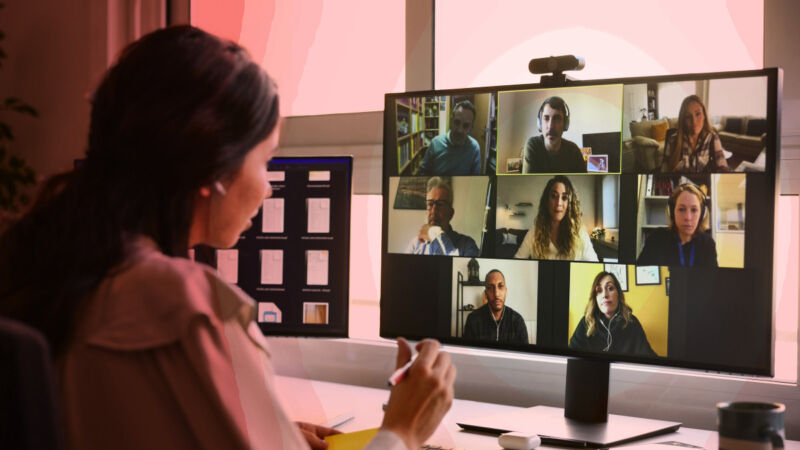
One way the coronavirus pandemic changed our lives is that now we do video calls more than ever. Why? You’d ask. Because for most of us, that’s the only way to communicate with our work buddies, friends living far away, or kids attending online classes. There’s even a term for it; it’s called Zooming.
But this overuse of
video conferencing technology
comes with its set of cons: one of them is Zoom Fatigue. So, let’s explore more about this new kind of problem that many people are facing nowadays.
What Is Zoom Fatigue?
Zoom Fatigue is a situation where a person feels tired and exhausted after a video conferencing session. While the condition is named after the Zoom app due to its popularity, it would apply to other video chat apps such as Google Meet, Facetime, etc.

Various research works have now started surfacing, attempting to analyze the psychological consequences of prolonged virtual meetings. One study conducted by Standford researcher Jeremy Bailenson
summarizes
the causes of Zoom meeting fatigue in four key pointers. The researcher also suggests solutions on how people can overcome tiredness and mental fatigue due to video calls and save energy.
Bailenson, along with other researchers, has also developed the Zoom Exhaustion & Fatigue Scale, which can be used to measure videoconferencing fatigue at work. It asks series of questions related to a person’s general fatigue, social fatigue, emotional fatigue, etc.
What Causes Zoom Fatigue And How to Overcome It?
1. More eye contact and intense situations
If you are someone who uses a 27-inch iMac to make video calls, you might be overwhelmed by the size of the person’s face on the other side. In the real world, a person being too close to us triggers the feeling of intimacy or conflict. In one-to-one video chats, you might see the other person’s face at a size that simulates those intense situations, according to Bailenson, and “you are in this hyper-aroused state.”
Adding to that, the grid-based user interface in video calls increases the eye-contact dramatically. Here everyone is looking at everyone, even if they don’t interact with each other at all. The feeling of being looked at all the time could trigger social anxiety of public speaking in some people, which is a stressful situation.
Looking at the multi-cam setup also messes up with the brain’s central vision as it has to process so many faces simultaneously.
As a remedy, Bailenson suggests using an external monitor to move away from the screen and the people. You can also reduce the size of the app window relative to the screen.
2. Videos calls reduce our movement
While some of us might have had the privilege to eat wafers during video calls, some have to sit in the same position and remain in the camera’s field of view. But the research notes that video calls reduce our mobility by a significant degree in an unnatural way compared to an in-person conversation or phone calls where we can move around.
Here, Bailenson suggests using an external webcam and keyboard placed at a distance that allows us to have a more relaxed and flexible setup. Turning the camera off for some time will allow the users to move around a little during the call. Studies suggest people could perform better cognitively while they’re moving.
3. Seeing ourselves during the call is tiring
One thing that many people aren’t much comfortable with is seeing themselves on the camera and hearing their own voice. If you’re into making videos, you might be familiar with this. The study says that people constantly viewing themselves during the video call become more critical of themselves, and it’s taxing.
It’s like seeing yourself in the mirror, which could bring negative emotional consequences. As a solution, you can enable the hide self-view option in the video conferencing app, Bailenson suggests.
4. Video calls increase cognitive load
While virtual meetings can be done in the comfort of our home, there is an uninvited consequence of not having a face-to-face interaction with people. When we interact with people directly, in addition to the words being spoken, we subconsciously take the help of various non-verbal cues, gestures, and body language to understand what they are trying to convey.
The virtual setup where the video frame mostly includes our faces makes it harder to understand those things. Here, turning off the camera for a while will free your mind from looking for those nonverbal cues and not getting “smothered with gestures that are perceptually realistic but socially meaningless.”
Now you know what is Zoom fatigue and how to dodge it, if not stop it altogether. If you have something to add, feel free to drop your thoughts in the comments.
The post
What Is Zoom Fatigue? Is It Real? How To Overcome It?
appeared first on
Fossbytes
.
 chevron_right
chevron_right




